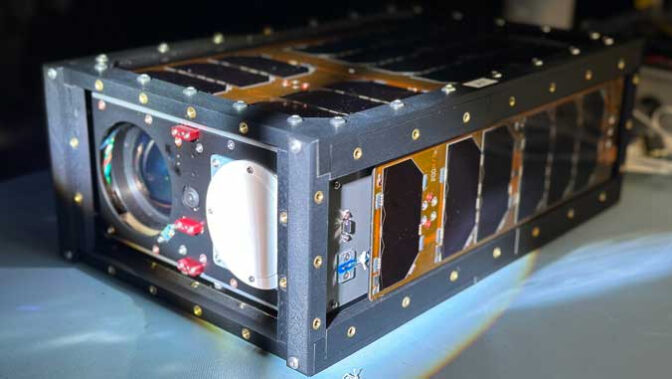By Staff Reports
(Hawaii)– A satellite designed and built by a team of more than 60 students and faculty from the University of Hawaiʻi at Mānoa successfully launched from Kennedy Space Center in Florida on March 21. The Hyperspectral Thermal Imager (HyTI) satellite launched aboard the SpaceX commercial resupply mission to the International Space Station (ISS), deployment from the ISS is expected in May. The mission is expected to last one year.
“It is so special that I was able to watch my first live rocket launch with something I helped make on board,” said Chiara Ferrari-Wong, a UH graduate research assistant who traveled to Florida to watch the launch. “The launch represented a culmination of our team’s hard work and efforts over the past few years, and will remain one of my core memories of my time at UH Mānoa. I am incredibly fortunate to have worked with the team and had the opportunity to see the spacecraft go from concept to reality.”
UH satellite to study volcanic activity, more
The project’s focus is to gather valuable data for understanding Earth’s surface processes, including volcanic activity, wildfires and soil-moisture levels. Led by Principal Investigator Robert Wright, director of the Hawaiʻi Institute of Geophysics and Planetology (HIGP), the project began in October 2018, with funding from NASA‘s In-Space Validation of Earth Science Technologies Program.
“We have a couple of volcanoes here within the state which regularly erupt,” said Wright. “And the kind of data that HyTIwill collect will be useful to study the eruptions that happen in the future within the state of Hawaiʻi.”
The HyTI satellite, officially owned by NASA and operated by the Hawaiʻi Space Flight Laboratory, was selected in 2019 as part of NASA‘s CubeSat Launch Initiative, under the Educational Launch of Nanosatellites program. Equipped with onboard data processing capabilities, the satellite will deliver high-resolution thermal images, surpassing the capabilities of current sensors. These images will enable scientists and disaster response managers to analyze and respond to environmental events with precision and speed.
UH students, staff and faculty have been actively involved in the development of the HyTI satellite, including six faculty members, 15 staff, eight graduate students, two post-docs, 30 undergraduate students and six high school interns.

